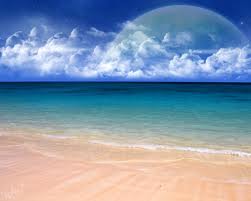
Polar ice-caps are a very significant feature of the present-day Earth. The outer layer of ice, covered with snow, reflects the incoming solar radiation more effectively than land or open water. Thus, a situation is created where only a small amount of energy is able to penetrate into the surface water or the underlying land. Once these polar ice-caps are established, they have the tendency to act in a self-perpetuating manner.
The freezing of sea water itself creates a form known as sea-ice. When seawater freezes, the salts concentrate into small brine droplets that are trapped within the ice. These brine droplets become more saline and the freezing point of the droplets becomes greatly depressed in comparison to that of the ice surrounding the droplets. Therefore, the brine droplets will remain in the liquid form at temperatures well below that of the ice formation.
Icebergs make up another major form of ice in the oceans. Icebergs in the Arctic are carried to sea by valley glaciers from land masses such as Greenland. These icebergs come in irregular shapes as they are remnants of thick ice sheets that fringe on the Arctic Ocean. The icebergs in the Southern Ocean are tabular icebergs which are formed by the calving of the ice-shelves found in the Ross and the Wedell Seas.
Seawater itself is very different from freshwater. Two of the most important properties of seawater are temperature and salinity, the concentration of dissolved salts. The two properties work in conjunction to control the density of the water. The density of water is a major factor which controls the vertical movement, via condensation, of the ocean waters. The salinity of seawater is the most important factor in the consideration of human use. The average salinity of seawater is 35 part per thousand by weight (3.5 percent by weight). The major ions that make up 99.9% of sea water are as follows:
Dissolved Constituents Parts Per Thousand By Weight
| Chloride | 18.980 | Sulfate | 0.649 | Bicarbonate | 0.140 | Bromide | 0.065 |
| Borate | 0.026 | Fluoride | 0.001 | Sodium | 10.556 | Magnesium | 1.272 |
| Calcium | 0.400 | Potassium | 0.380 | Strontium | 0.013 |
The total dissolved salts of seawater is 300 times that of river water. The main dissolved constituents in rainwater are sodium and chloride. The main dissolved constituents of river water are hydrogen carbonate and calcium. Whereas, the main dissolved constituents of seawater include sodium and chloride.
Total Dissolved Salts Milligrams Per Liter
| Rainwater | 7.1 | River Water | 118.2 | Sea water | 34,400 |
Note that the TDS of river water is 15 times the TDS of rainwater while the TDS of seawater is 400 times that of rainwater. This is the main reason why sea water is not a good source of drinkable water.






